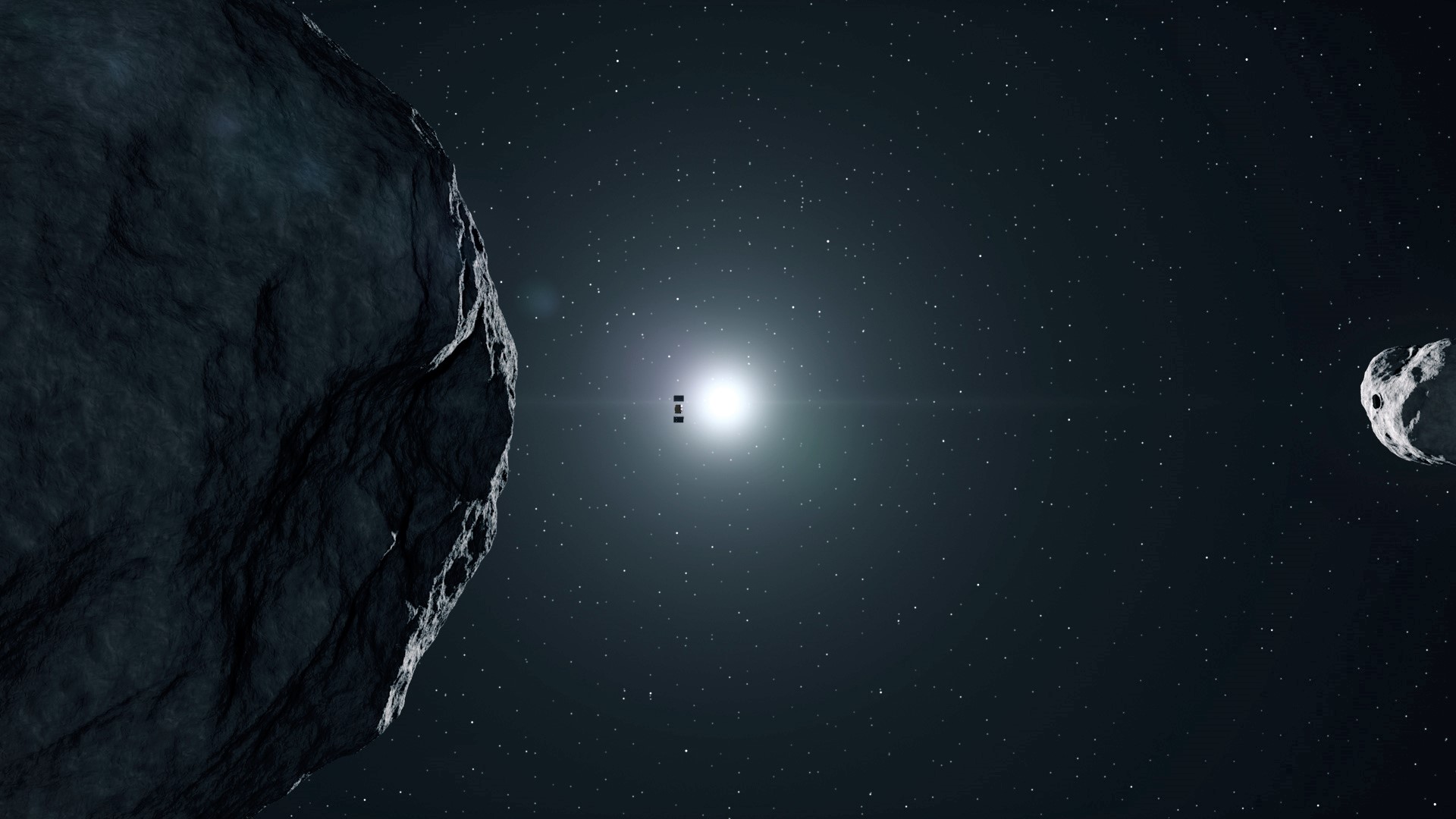Bremen, February 17, 2025. Asteroids crossing the Earth's orbit are not unusual. ESA and NASA maintain risk lists of all objects whose probability of impact on Earth is not zero. The asteroid currently at the top of these lists was discovered last December and has caused quite a stir globally: 2024 YR4.
2024 YR4 is most likely a piece of rock whose diameter is estimated to be between 40 and 90 meters. The asteroid is currently moving away from Earth before it will return in December 2028. For that encounter, it has already been determined that the asteroid will miss the Earth. Whether this will also be the case in 2032, when the asteroid next crosses the Earth's orbit, is still unclear. At present, the impact probability is at 2.1 percent. What may not sound like much is one of the highest probabilities ever determined for the impact of an asteroid of significant size.
Should it hit, 2024 YR4 would cause widespread destruction. Although the asteroid is not large enough to reach the Earth's surface, its break-up in the atmosphere would have an explosive force several hundred times greater than that of the Hiroshima bomb.
To be prepared for the threat of an impact – of 2024 YR4 or other asteroids – a team of OHB experts is working on asteroid defense.
Asteroid defense has already been tested
Humanity's ability to divert dangerous asteroids was demonstrated in September 2022, when NASA's DART spacecraft deliberately collided with the asteroid Dimorphos. For this mission, ESA contracted OHB to develop, build and test the Hera probe, which is currently on its way to Dimorphos and will be studying the effects of the DART impact in greater detail.
In addition, OHB is currently working on the development of the RAMSES mission, which is targeting the asteroid Apophis. Apophis was also estimated to have a probability of impact of more than 2 percent, before it was reduced to 0 following further observations and a more accurate determination of the asteroid's trajectory. It will pass by the Earth at a distance of 32,000 kilometers on April 13, 2029. ESA wants to take advantage of this unique opportunity to send a probe to Apophis in advance to observe the flyby at close range and document changes in the asteroid's properties caused by Earth's gravity.
Mission plan for an emergency
OHB experts have now also started working on a mission plan to redirect 2024 YR4. This is to ensure that the asteroid can be deflected in an emergency and includes looking into reusing previous designs of OHB missions to asteroids, such as Hera or Ramses.
Although further observation of the asteroid's trajectory will most likely reduce the probability of an impact to zero, it is important to start developing a defensive mission at an early stage. This is because the probability of impact might still increase, and the next – and best – launch opportunity for an impact probe is already in 2028.
Contact for media representatives:
Marianne Radel
Head of Corporate Communications
Phone: +49 421 2020 9159
Email: marianne.radel@ohb.de
Contact for investors and analysts:
Marcel Dietz
Investor Relations
Phone: +49 421 2020 6426
Email: ir@ohb.de

